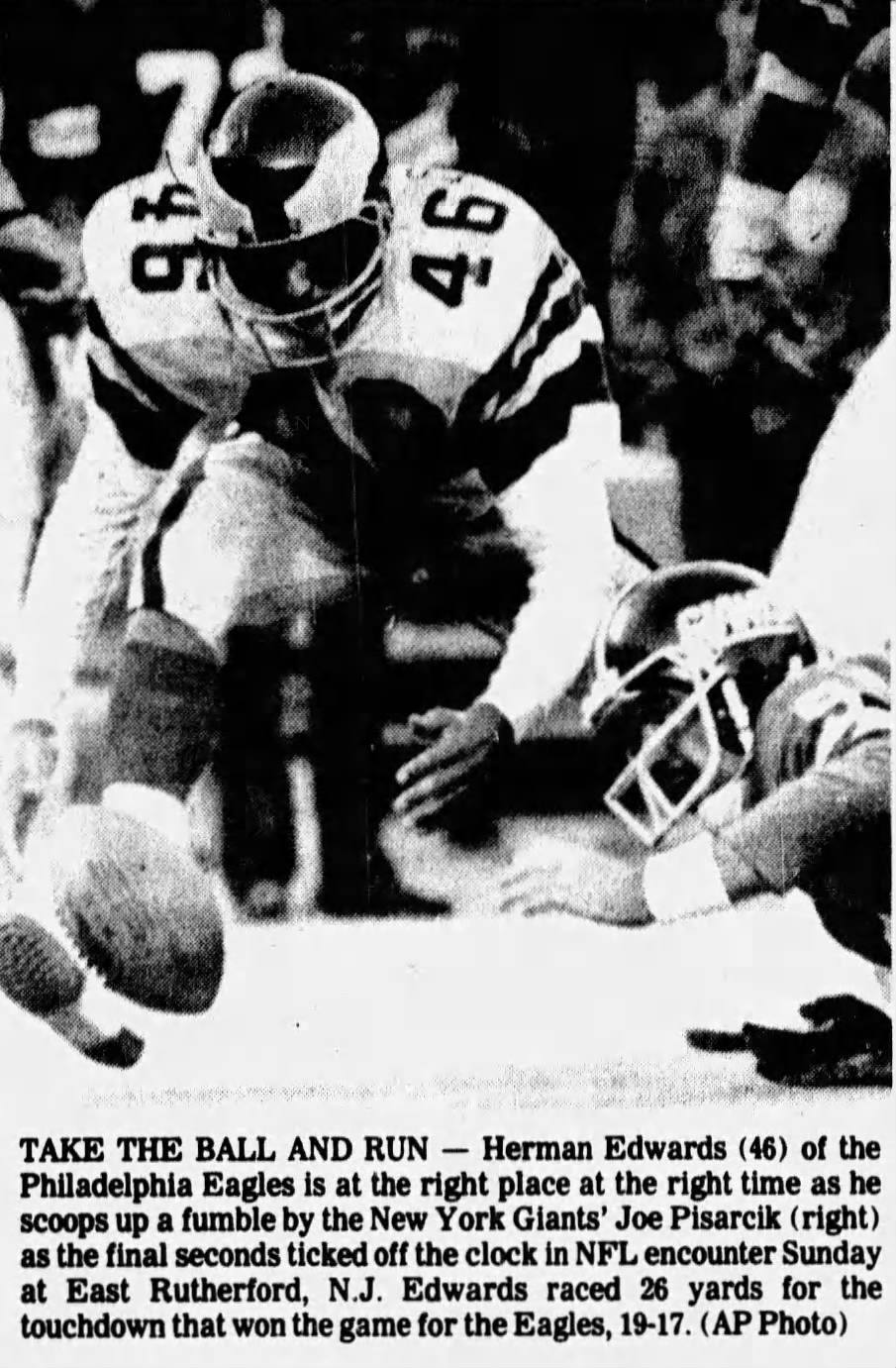The Unbelievable End to a Classic Rivalry
On November 19, 1978, a routine NFC East matchup between the New York Giants and the Philadelphia Eagles turned into one of the most infamous and consequential moments in NFL history. It was a game that was all but over—a routine victory celebration was already beginning on the Giants’ sideline—until a single, inexplicable decision transformed a win into a disaster now permanently known as the “Miracle at the Meadowlands.”
The Giants, leading 17-12 with just seconds remaining, had the ball deep in Eagles territory. Philadelphia had exhausted all of its timeouts. All the Giants quarterback, Joe Pisarcik, needed to do was kneel down, let the clock run out, and secure the victory. Game over.
But in a moment of pure confusion, Pisarcik did not kneel.
The Fumble that Shook Giants Stadium
Instead of ending the game, the Giants coaching staff inexplicably called for a running play. Pisarcik took the snap and attempted to hand the ball off to running back Larry Csonka. The execution was a catastrophic failure: the handoff was fumbled, the ball bounced free, and Eagles cornerback Herman Edwards swooped in to scoop it up.
With an open field ahead of him, Edwards sprinted 26 yards for the game-winning touchdown as the clock expired. The final score: Eagles 19, Giants 17. The silence of the Giants’ sideline was instantly replaced by a mix of fury and stunned disbelief from the crowd.
 Miracle Meadowlands Fumble 20 Nov 1978, Mon The Evening Sun (Hanover, Pennsylvania) Newspapers.com
Miracle Meadowlands Fumble 20 Nov 1978, Mon The Evening Sun (Hanover, Pennsylvania) Newspapers.com
The play had immediate, lasting consequences. It spurred the NFL to implement the “victory formation,” making the act of kneeling down the standard procedure to run out a clock. For the Eagles, it was a turning point in their season and a defining moment in the rivalry. For the Giants, it became the benchmark for organizational blunders and led directly to major personnel changes. The “Miracle at the Meadowlands” remains an unparalleled example of victory snatched from the jaws of defeat.

